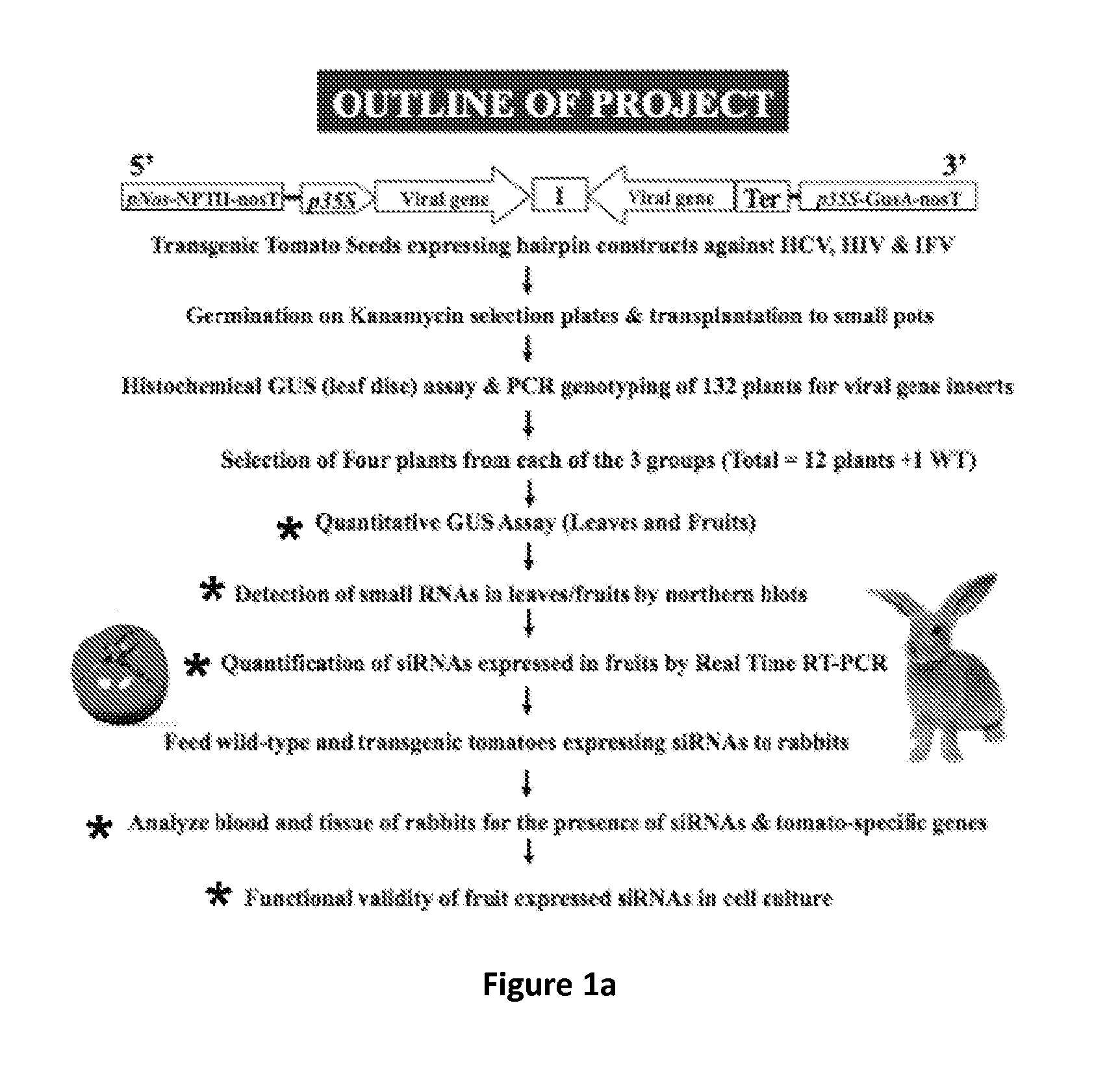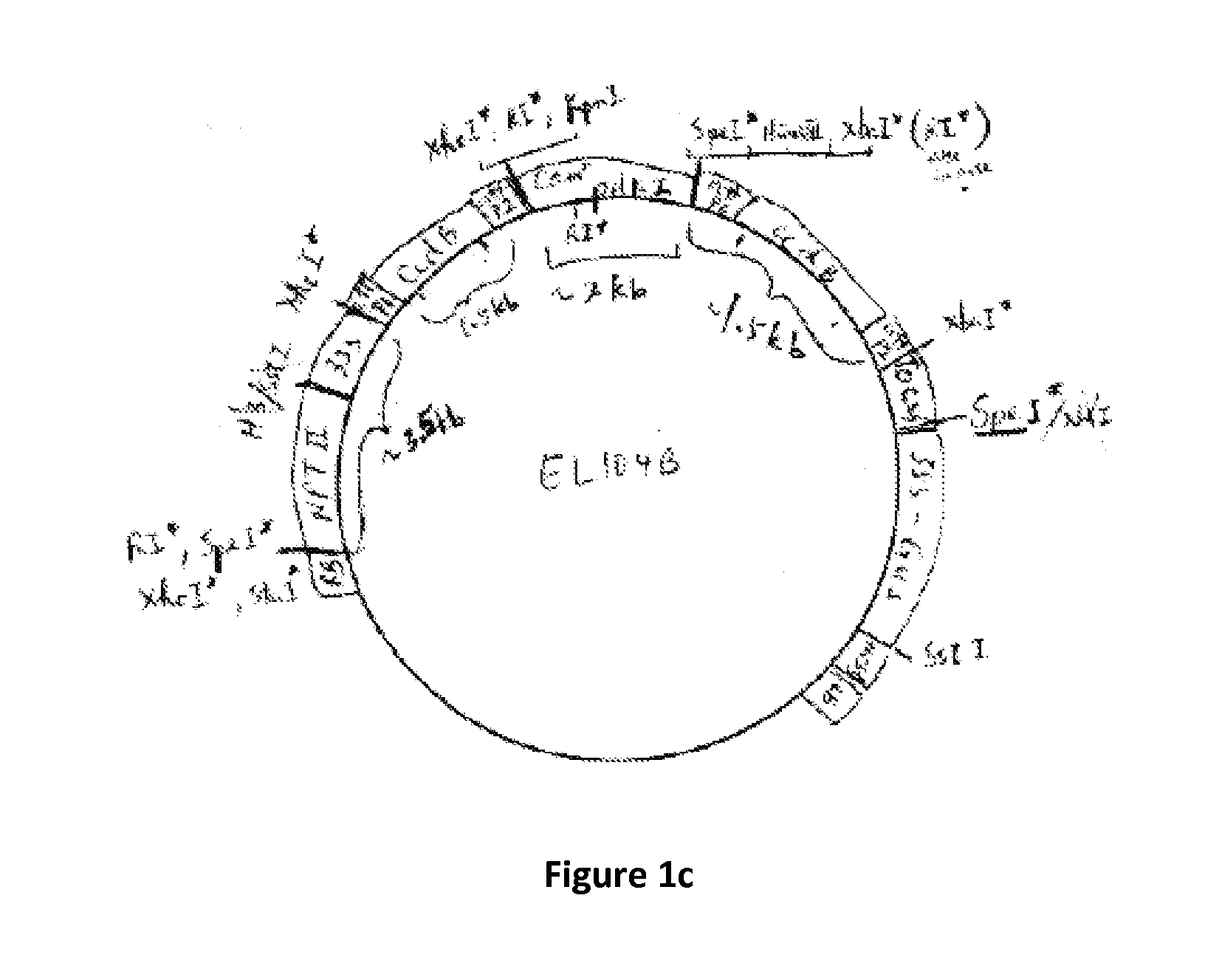Edible Transgenic Plants as Oral Delivery Vehicles for RNA-Based Therapeutics
- Summary
- Abstract
- Description
- Claims
- Application Information
AI Technical Summary
Benefits of technology
Problems solved by technology
Method used
Image
Examples
examples
[0035]We have constructed binary vectors using 306 to 500 base pairs (bps) of essential regions from the influenza virus H1N1 (IFV), hepatitis C virus (HCV) and human immunodeficiency virus (HIV) to produce dsRNAs from these sequences in transgenic plants. 500 and 498 bps of the nucleoprotein (NP) encoding segments of the H1N1 and HCV were used respectively, while 306 bps of the Tat gene from HIV was used (FIG. 1b). The dsRNA transcripts thus produced in transgenic plants are known to undergo rapid processing into siRNAs to target specific sequences for cleavage. The vector is shown in FIG. 1c along a schematic flow chart of the steps taken to reduce the invention to practice (FIG. 1a). The respective viral sequences were first cloned into our gene suppression vector as inverted repeats that are separated by an intron from the Pdk gene of Flaveria containing a chloramphenicol resistance marker, which is spliced out in plant cells after the production of the nascent transcript in the...
PUM
 Login to view more
Login to view more Abstract
Description
Claims
Application Information
 Login to view more
Login to view more - R&D Engineer
- R&D Manager
- IP Professional
- Industry Leading Data Capabilities
- Powerful AI technology
- Patent DNA Extraction
Browse by: Latest US Patents, China's latest patents, Technical Efficacy Thesaurus, Application Domain, Technology Topic.
© 2024 PatSnap. All rights reserved.Legal|Privacy policy|Modern Slavery Act Transparency Statement|Sitemap



